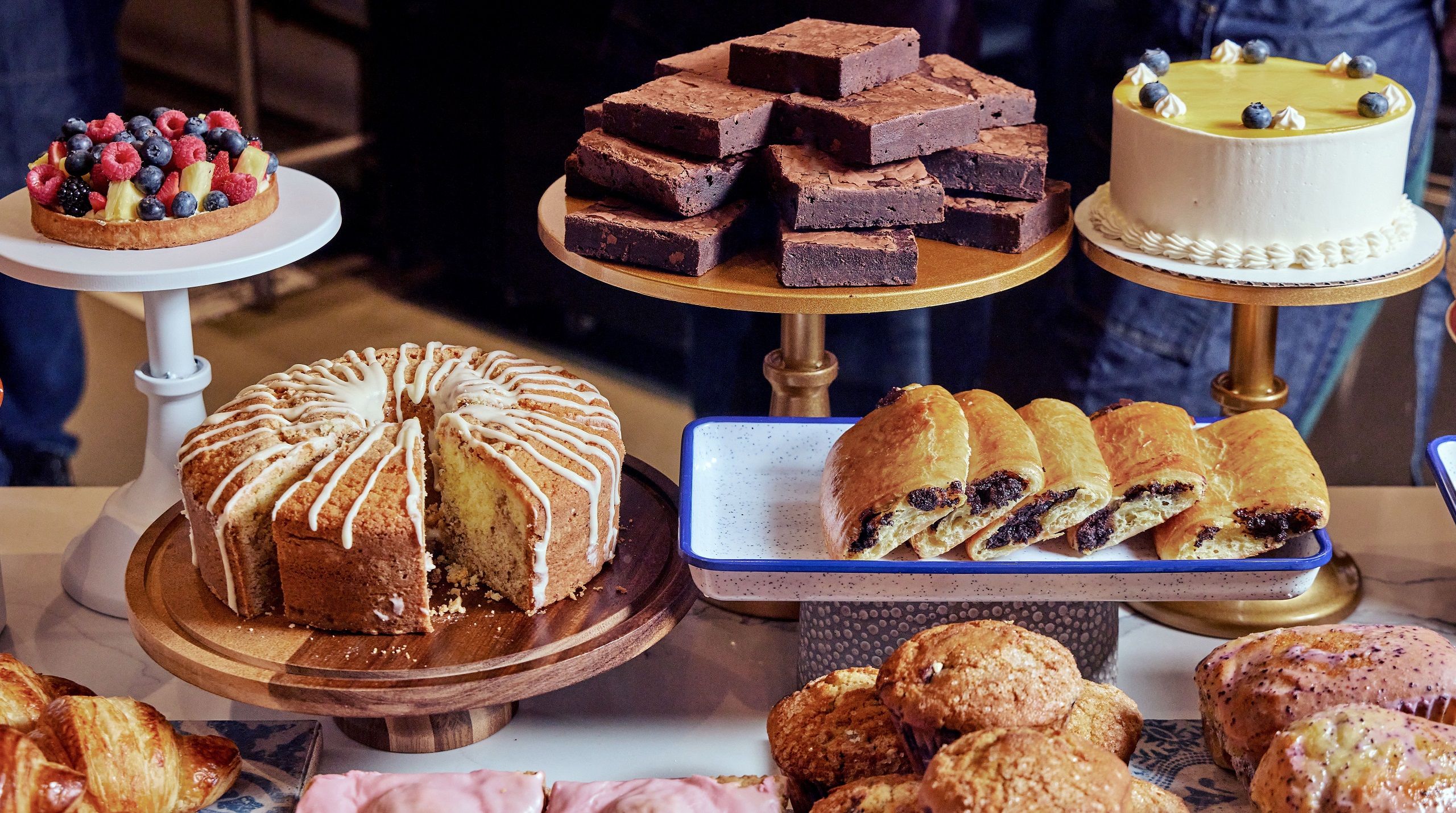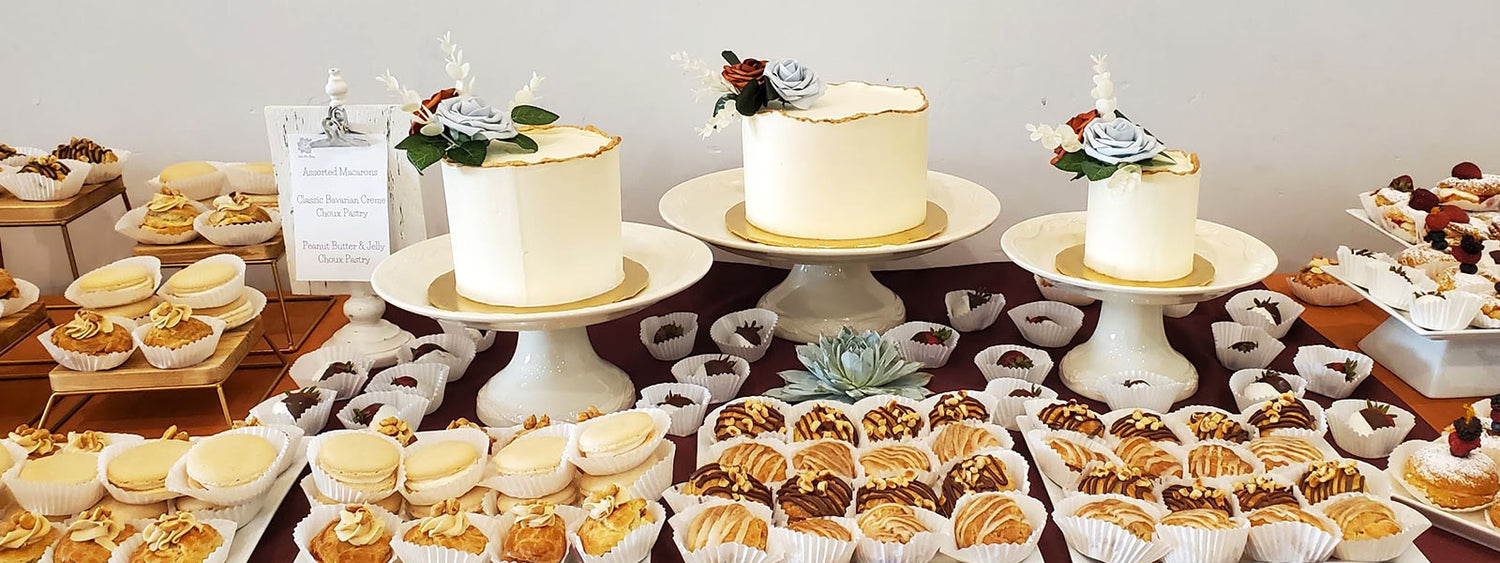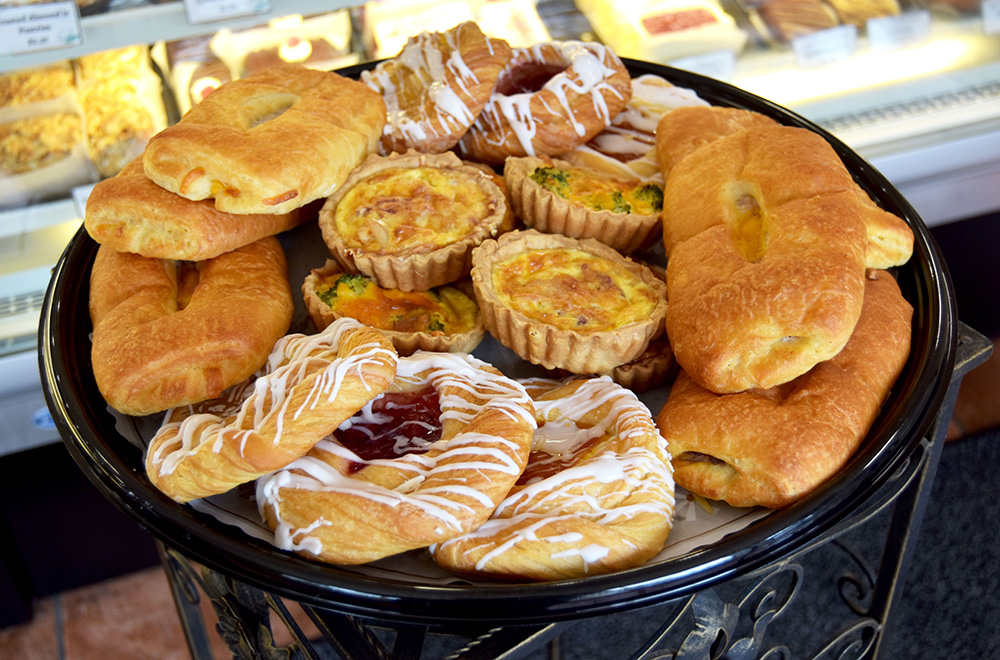Make Your Celebration Special with Birthday Catering Maddington
Make Your Celebration Special with Birthday Catering Maddington
Blog Article
Understanding the Art of Bakeshop Products: From Newly Baked Breads to Tempting Pastries and Finger Foods
From the science behind the best loaf of bread, where fermentation and gluten advancement play essential functions, to the finesse required for developing split pastries, each aspect reveals an engaging story of workmanship. The flexibility of finger foods illustrates how taste and structure can be artfully combined to involve varied taste choices.
The Scientific Research of Bread Making
At the heart of every loaf of bread lies an interesting interaction of chemistry and biology. The process of bread making starts with the mix of flour, yeast, salt, and water-- each ingredient playing a vital duty in the final product.
Yeast, a living microorganism, ferments the sugars existing in the flour, producing carbon dioxide and alcohol in the procedure. The carbon dioxide gas produces bubbles in the dough, creating it to climb and develop a light structure. The temperature level and moisture during fermentation considerably affect yeast task and, consequently, the bread's flavor and structure.

Mastering Pastry Methods
How can one attain the delicate equilibrium of texture and taste that defines outstanding pastry? Understanding pastry methods requires a deep understanding of components, approaches, and the science behind them. Basic to this craft is the option of high-quality components-- flour, butter, sugar, and eggs-- each playing a critical duty in the end product's taste and texture.
The strategy of lamination, which entails folding layers of dough and butter, produces the preferred flakiness in pastries like croissants and smoke bread. Precision in temperature is essential, as butter ought to remain cold to guarantee optimal layers. Correct blending methods, such as the creaming method for cakes, make sure also unification of air and fat, resulting in a light and airy crumb.
Furthermore, preserving the ideal moisture degrees throughout baking can considerably influence the outcome, guaranteeing that pastries increase properly and attain that golden-brown coating. The art of bread likewise demands persistence and method; each attempt improves one's skill and understanding of the intricate equilibrium called for to develop tempting breads that delight the senses. Mastery in these techniques inevitably identifies a skilled bread cook from an amateur.
Kinds of Finger Foods
The world of culinary thrills expands beyond pastries to encompass a vast variety of finger foods, which are commemorated for their benefit and flexibility. These bite-sized treats are excellent for social celebrations, providing a range of tastes and appearances that satisfy diverse her comment is here tastes.

On the sweeter side, bite-sized cupcakes and small tarts use a fascinating finish to any meal, attracting those with a craving for sweets. Cheese and charcuterie boards serve as a sophisticated choice, allowing guests to customize their bites with an assortment of meats, fruits, cheeses, and nuts.
Flavor Profiles in Cooking
Cooking is a detailed dancing of taste profiles that navigate here integrates sweet, savory, and umami notes to create a harmonious experience for the taste. Recognizing these profiles Get the facts is crucial for bakers seeking to raise their creations.
Sweetness typically acts as the foundation in baked items, with sugars, fruits, and all-natural sweeteners enhancing taste deepness. Components such as chocolate and sugar present complex pleasant notes that can either control or match other tastes. On the other hand, savory components, commonly discovered in breads and pastries, offer balance and contrast. Ingredients like seasonings, herbs, and cheeses can change an easy dough into a diverse flavor experience.
Umami, regularly neglected in cooking, plays a significant function in improving flavors. Components such as aged cheeses, fermented items, or perhaps specific nuts add to a savory depth that boosts total taste.
Furthermore, the interaction of acidity from ingredients like buttermilk or citrus passion can lighten up tastes, providing a rejuvenating counterpoint to sweet taste. By attentively combining these flavor accounts, bakers can craft items that reverberate with diverse palates, producing a remarkable cooking experience. Ultimately, grasping flavor accounts is crucial to innovation worldwide of baking.
Vital Cooking Devices and Active Ingredients
Comprehending taste profiles in cooking collections the stage for selecting the right devices and active ingredients that assist in the development of extraordinary baked goods. A dependable collection of cooking pans-- such as sheet pans, loaf frying pans, and cake pans-- is essential for attaining preferred shapes and appearances.
In terms of active ingredients, top quality matters significantly. Flour works as the backbone of most dishes; choosing the appropriate type-- be it all-purpose, bread, or pastry flour-- can drastically affect the end result. Sugar not just sweetens yet likewise contributes to appearance, while eggs serve as binders and raising agents. Cooking powder and baking soft drink are vital for creating lift in pastries and cakes.
In addition, integrating taste boosters like vanilla extract, flavors, and citrus enthusiasm can elevate your developments. By making certain access to these essential devices and active ingredients, bakers can confidently start their cooking trip, crafting a diverse range of fascinating baked items.
Conclusion
Mastery in bread production, bread preparation, and finger food presentation reveals the intricate partnerships in between procedures and active ingredients. Finger Food Catering Maddington. Exploring diverse taste profiles enriches the baking experience, while crucial devices and components provide the structure for success.
Exactly how can one achieve the fragile balance of texture and taste that defines exceptional bread? Essential to this craft is the selection of high-grade components-- flour, butter, sugar, and eggs-- each playing an important role in the last product's taste and texture.

Recognizing taste accounts in cooking collections the phase for selecting the right devices and ingredients that facilitate the creation of extraordinary baked products. Checking out varied flavor profiles enhances the baking experience, while vital tools and ingredients provide the foundation for success.
Report this page